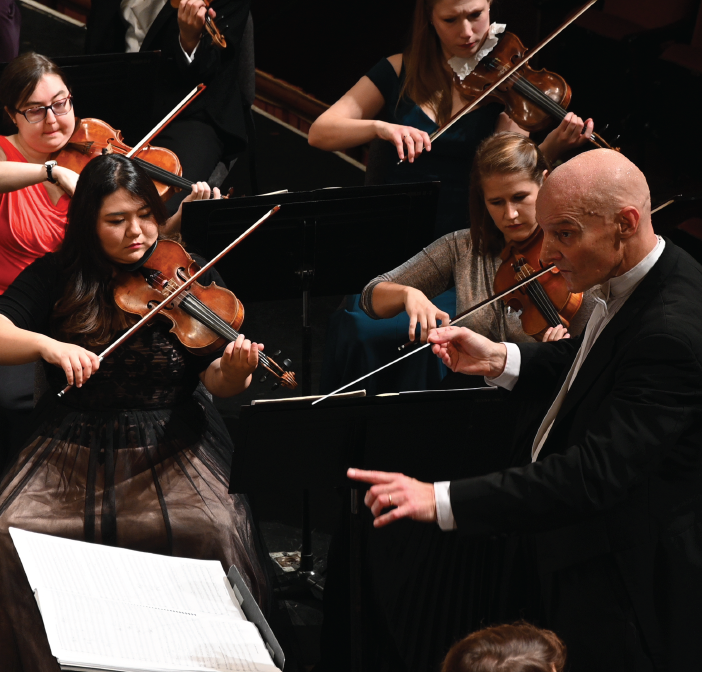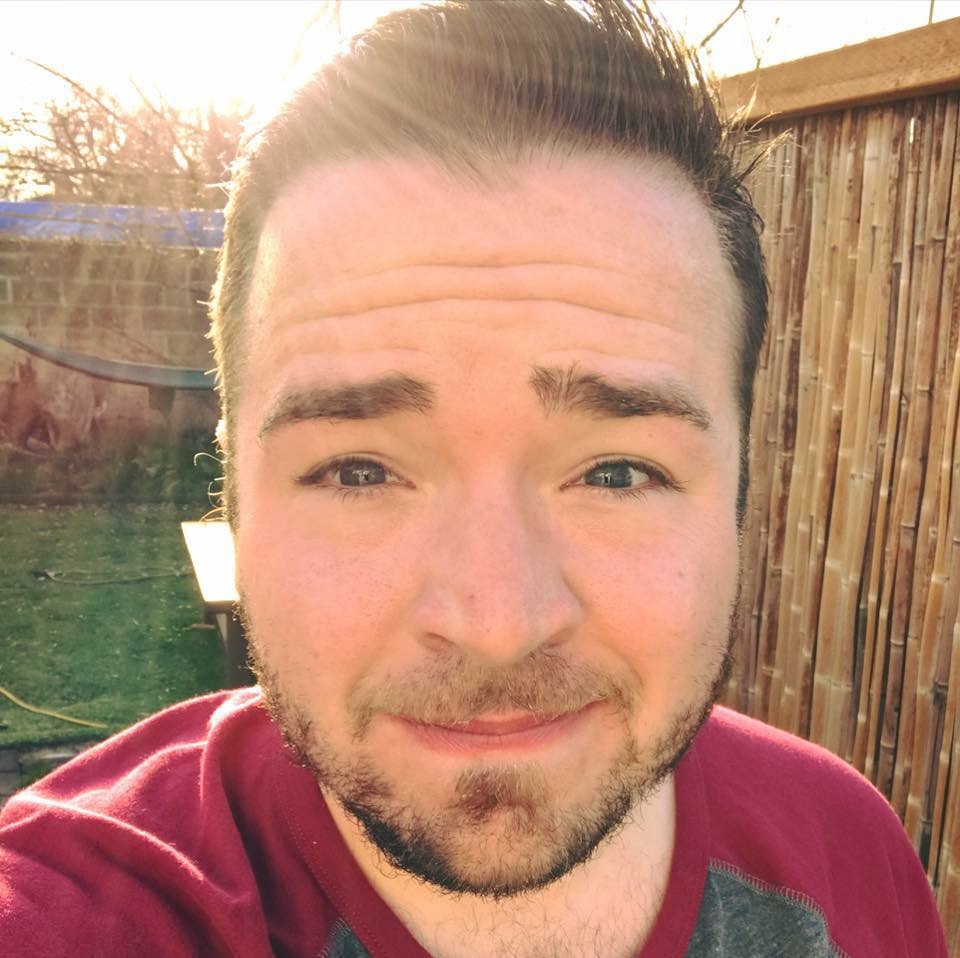War affects the individual human being in a multitude of complex ways. Yet it holds universal commonalities, the likes of which are explored this weekend in the Quad City Symphony Orchestra’s Masterworks II: Conflict performances dealing with the emotional influence of war and conflict on the human experience.
A National Piece of Mourning
Up first in Masterworks II is Samuel Barber’s Adagio for Strings. Written in 1936, the piece was premiered just two years later by the NBC Symphony Orchestra via a radio broadcast.
“Barber’s Adagio for Strings has become our national piece of mourning,” said QCSO Music Director and Conductor Mark Russell Smith. “It’s often played at funerals. It’s a powerful, reflective piece just for strings.”
The piece is as timeless as it is powerful. The recording of its 1938 debut was selected in 2005 for preservation in the National Recording Registry at the United States Library of Congress.
“Adagio for Strings is probably the most famous work of this program, at least to people’s ears,” said QCSO Executive Director Brian Baxter. “It’s hard not to feel like you want to cry at the end of it. Not because it’s completely sad, but because of how it captures this sound and beauty so effortlessly. It’s just gut-wrenchingly beautiful.”
Honoring Walt Whitman
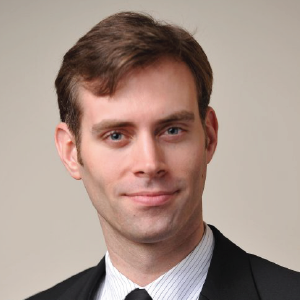 The second piece of Masterworks II continues QCSO’s tribute to legendary American poet and essayist Walt Whitman. Reflecting on Whitman’s poem The Wound-Dresser, American Composer John Adams reimagines Whitman’s time as a hospital volunteer during the Civil War.
The second piece of Masterworks II continues QCSO’s tribute to legendary American poet and essayist Walt Whitman. Reflecting on Whitman’s poem The Wound-Dresser, American Composer John Adams reimagines Whitman’s time as a hospital volunteer during the Civil War.
“What Adams is trying to do with the music is reflect the text,” Baxter said. “Whitman’s poem is so graphic in that he doesn’t cover up what’s happening in war. There’s all this horrible loss and death. Yet the beauty in his words is stunning.”
Whitman certainly doesn’t hold back in describing the brutality of war and conflict. In one stanza he writes:
“I dress the perforated shoulder, the foot with the bullet-wound,
Cleanse the one with a gnawing and putrid gangrene, so sickening, so offensive,
While the attendant stands behind aside me holding the tray and pail.”
Adams channels it all, writing a piece for chamber orchestra paired with a baritone singer. Vocalist Paul Max Tipton will help sing the piece to life during next weekend’s performances.
“Paul’s voice works perfectly for The Wound-Dresser. He’s very expressive and offers a great sound that will blend well with the orchestra,” Baxter said.
While the first half of the Masterworks II program reflects on the small yet critical moments within war and conflict, the second half takes a grander approach, promising to overwhelm the audience with unanticipated candor and authenticity.
A Symbol of Resistance
 Last but certainly not least is Dmitri’s Shostakovich’s Symphony No. 7. A Russian composer, Shostakovich wrote the piece in 1941 during WWII and dedicated it to the city of Leningrad where he was born.
Last but certainly not least is Dmitri’s Shostakovich’s Symphony No. 7. A Russian composer, Shostakovich wrote the piece in 1941 during WWII and dedicated it to the city of Leningrad where he was born.
“Shostakovich’s Symphony No. 7 is unique in that it was written during a war,” Smith said. “It was written under the most incredible circumstances when Leningrad was under siege by the Nazis.”
Germany invaded Leningrad in 1941, beginning an 872-day long siege. The city was completely isolated from food and other resources, resulting in the death of more than one million Soviet citizens.
It is said these dire, horrific conditions inspired Shostakovich to write a symphony that would later become a symbol of resistance for the Allied forces.
“It was a really potent artistic weapon unlike anything else that I know,” Smith said. “It wasn’t just an artistic reflection of something that went by; it played an active role in WWII in the morale of audiences and troops.”
Shostakovich’s Symphony No. 7 premiered in March 1942 in the Russian city of Kuybyshev and was broadcasted across the entire Soviet Union. In June 1942, the piece was performed by the London Philharmonic Orchestra, making its way across the pond to New York City just a month later.
All the while Shostakovich and his popularity surged. He found himself featured on Time Magazine, an acknowledgment of the historic value of what he had created.
A Multilayered Symphony
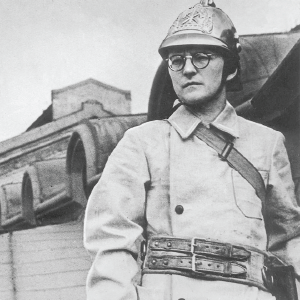 Symphony No. 7 consists of four movements, each capturing a distinct sentiment. The first details an invasion, beginning rather cheerfully but then transitioning into a march-like tempo.
Symphony No. 7 consists of four movements, each capturing a distinct sentiment. The first details an invasion, beginning rather cheerfully but then transitioning into a march-like tempo.
“People talk about the invasion theme in the first movement. That march uses this melody from Franz Lehár’s The Merry Widow, which is said to have been Hitler’s favorite opera,” Baxter said.
The second movement is the symphony’s shortest, often described as playful and quiet. The third movement is much more frantic in comparison, quickly growing in intensity and ferocity.
Finally, the last movement hints at victory, though leaves the listener wondering if the cycle of conflict will simply resume.
“Shostakovich’s Symphony No. 7 is epic. It’s one of the biggest symphonies you can perform,” Baxter said. “This is a piece I find really overwhelming. It’s big, loud, and impressive. It’s the full force of what the orchestra can do.”
The Toll of War and Conflict
For as long as human beings have existed, so has war. A disaster at its core, warfare leaves little behind other than loss and devastation.
Yet the human spirit persists. Despite the loss and devastation, somehow there is hope.
EVENT DETAILS
Masterworks II: Conflict
November 2, 2019 | 8:00 p.m.
Adler Theatre
136 E 3rd St | Davenport, IA
November 3, 2019 | 2:00 p.m.
Centennial Hall
3703 7th Ave | Rock Island, IL
Purchase Tickets | $18 – $65 Adults each | $10 – $33 Students each
Enrich Your Experience
INSIDE THE MUSIC
Join QCSO Music Director Mark Russell Smith in an exploration of the Masterworks programs on Thursday evening preceding each Masterworks concert. Doors open at 4:45 p.m. Free Admission. Cash Bar. Hosted at the Adler Theatre
CONCERT CONVERSATIONS
One hour prior to each Masterworks performance, concert-goers are invited to attend informal pre-concert conversations to hear about the works being presented. Hosted by Kai Swanson. Sponsored by Chris Connoly, Wells Fargo Advisors
AFTERGLOW
Mingle with Maestro Mark Russell Smith, guest artists, and members of the QCSO immediately following the Saturday Masterworks performances. Free Admission. Cash Bar. Hosted at the Hotel Blackhawk
